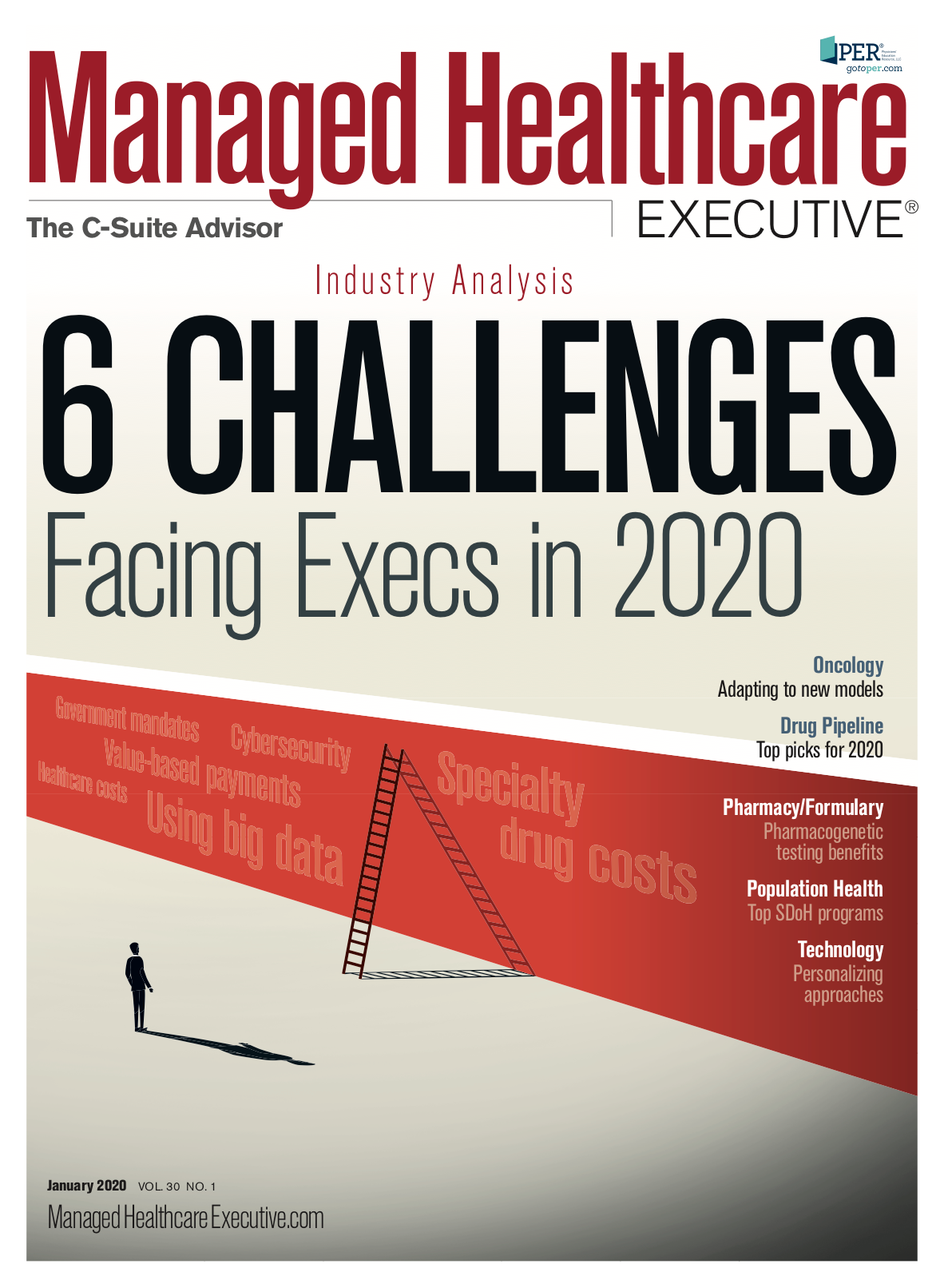Top Pharmacy Regulations for 2020: What Pharmacists Should Know
The new and proposed federal regulations, as well as state laws, that are trending across the United States.

Pharmacists have an important responsibility not only to keep up with new drug approvals but also to stay abreast of the latest pharmacy regulations affecting the profession. The Oath of a Pharmacist states: “I will accept the lifelong obligation to improve my professional knowledge and competence.” Pharmacists can stay up to date by participating in continuing education (CE) programs, through various resources, such as professional organizations, and registering for email alerts with the Drug Enforcement Administration (DEA) and FDA.
Here are the new and proposed federal regulations, as well as state laws, that are trending across the United States.
Proposed Laws Aimed to Reduce Opioid Abuse
The DEA recently announced proposed regulations to further limit excess quantities of opioids amid the epidemic. According to the National Institute on Drug Abuse, more than 130 people in the United States die daily from an opioid overdose. Additionally, opioid abuse results in an U.S. economic burden of $78.5 billion a year, which includes healthcare costs, loss of productivity, addiction treatment, and criminal justice involvement. The DEA has issued a proposal to reduce the amounts of five Schedule II opioid-controlled substances manufactured in 2020 compared with 2019. The proposal includes reducing the production by these drugs by the following amounts: fentanyl (31%), hydrocodone (19%), hydromorphone (25%), oxycodone (9%), and oxymorphone (55%). This is expected to result in a quota that would be a 53% decrease in the amount of allowable production of these opioids since 2016. Comments were due by October 10, 2019 and will be reviewed by the DEA.
Related: Seven Pharmacy Regulations Health Execs Must Watch
“Reducing the amount of opioids of these Schedule II drugs that have the highest potential for abuse will hopefully help to combat the opioid epidemic,” says Fred Weissman, PharmD, JD, associate professor, clinical pharmacy, USC School of Pharmacy, Los Angeles. Weissman has also authored the book “A Guide to California Community Pharmacy Law” and discussed the importance of laws that are aimed to curb prescription drug abuse. Controlled substance prescriptions must be issued for a legitimate medical purpose by a practitioner. However, pharmacists have a corresponding responsibility when filling and dispensing the prescription and must use their professional judgement.
The DEA also announced additional proposed regulations for monitoring quotas for Schedule II controlled substances to help prevent prescription drug abuse as part of the Substance Use-Disorder Prevention that Promotes Opioid Recovery Treatment for Patients and Communities Act (SUPPORT Act). The SUPPORT Act requires that appropriate quota reductions be made after estimating potential for diversion and would help to ensure that there are sufficient quantities of the medications for the medical, scientific, research, and industrial needs of patients in the United States. The notice of the proposed regulation was published in the Federal Register, and the comment period ends December 23, 2019. The SUPPORT Act became law in 2018 and helped to establish more treatment programs for opioid abuse as well as strengthen monitoring of controlled substance prescriptions.
Most states and the District of Columbia have passed laws that allow pharmacists to dispense the emergency opioid overdose reversal treatment, naloxone, under a standing order, which takes the place of an individual prescription. Additionally, some states have given pharmacists direct authority to prescribe and sell naloxone to consumers. Weissman discussed that pharmacists can play an important role in dispensing naloxone to help prevent opioid overdoses. However, naloxone access can be limited in some communities. The FDA is currently working to ensure that this lifesaving drug is accessible, and one of the efforts is making it easier for companies to develop it as an over-the-counter (OTC) product. The FDA has designed, tested, and validated the key labeling requirements to approve an OTC naloxone product by developing a model Drug Facts Label (DFL) with pictogram instructions so that anyone with access to the drug can better understand how to administer it. Additionally, this is the first time that the FDA has proactively established and tested a DFL to assist with creating an OTC product. There are likely to be more laws and regulations in 2020 to reflect the expanded naloxone access and possible OTC availability.
Drug Supply Chain Security Act (DSCSA)
Certain aspects of the DSCSA will be implemented in 2020, which affects pharmacies. It was first enacted in 2013 and sets out serialization and track and trace requirements for the U.S. drug supply chain from the manufacturer to dispensers. “Every drug product should come from a legitimate source,” says Weissman. The DSCSA will enhance the FDA’s ability to help protect consumers from exposure to counterfeit, stolen, or contaminated drugs. Weissman discussed the importance of pharmacists understanding their responsibilities for protecting patients under the DSCSA, as many of the requirements affecting dispensers occur in 2020.
Pharmacists should check the following: registration of manufacturers and repackagers; licensing of wholesaler distributors and third-party logistics providers; and licensing of pharmacies through the state. Pharmacies should only accept prescription drugs that have the following three product tracing documentation: transaction information, transaction history, and transaction statement. The product tracing documentation must be stored in paper or electronic format for 6 years. Pharmacies must also ensure that they have a process in place to investigate and handle prescription medications that they believe are illegitimate, which include counterfeit, diverted, stolen, intentionally adulterated, or unfit for dispensing. Pharmacists must work with the manufacturers to ensure that appropriate measures are taken so that patients do not receive these illegitimate products, and the FDA, as well as trading partners they purchased the drug from and sold the medication to, must be notified immediately. Pharmacists should also check out the FDA’s free CE program that explains the DSCSA requirements.
Pharmacists and Hormonal Contraception Prescribing
The American College of Obstetricians and Gynecologists recently issued recommendations that hormonal contraception should be available OTC to expand access to patients without age restrictions. Evidence suggests that women want easier access to hormonal contraception. As of April 2019, 13 states and the District of Columbia allow pharmacists to prescribe certain types of hormonal contraceptives, which is now a growing trend across the country. Weissman discussed that each of the states have different training requirements for pharmacists, which is implemented by their respective board of pharmacy. In order to switch from prescription to OTC status, drug manufacturers can submit a New Drug Application to the FDA. The FDA considers the following for a switch: consumer labeling; analysis of whether patients can adequately self-screen based on the label; and evaluation of actual-use to simulate how the products would be used by consumers. Additionally, the FDA must ensure that the label and package inserts are written so that important information is understood by the layperson. Pharmacists can help to play an important role in women’s health as access to hormonal contraception continues to expand in 2020.
Jennifer Gershman, PharmD, CPh is a pharmacist and medical writer residing in South Florida.

Extending the Capabilities of the EHR Through Automation
August 2nd 2023Welcome back to another episode of "Tuning In to the C-Suite," where Briana Contreras, an editor of Managed Healthcare Executive, had the pleasure of chatting with Cindy Gaines, chief clinical transformation officer at Lumeon.
Listen
Upended: Can PBM Transparency Succeed?
March 6th 2024Simmering tensions in the pharmacy benefit management (PBM) industry have turned into fault lines. The PBMs challenging the "big three" have formed a trade association. Purchaser coalitions want change. The head of the industry's trade group says inherent marketplace friction has spilled over into political friction.
Read More
The deliberate disconnection of Change Healthcare to ring fence a cyberattack entered its seventh day today. Prescribers are finding ways to get pharmacy claims processed, and UnitedHealth Group says disruption to the dispensing of prescriptions has been minimal. But independent pharmacies want more information and protection from financial consequences from pharmacy benefit managers.
Read More